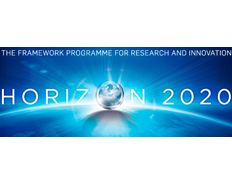Print

RIS And Purification Traps for Optimised spectRoscopy (RAPTOR): RAPTOR
Details
Locations:Finland
Start Date:Apr 1, 2019
End Date:Mar 31, 2021
Contract value: EUR 190,680
Sectors: Energy, Laboratory & Measurement
Description
Programme(s): H2020-EU.1.3. - EXCELLENT SCIENCE - Marie Skłodowska-Curie Actions
H2020-EU.1.3.2. - Nurturing excellence by means of cross-border and cross-sector mobility
Topic(s): MSCA-IF-2018 - Individual Fellowships
Call for proposal: H2020-MSCA-IF-2018
Funding Scheme: MSCA-IF-EF-ST - Standard EF
Grant agreement ID: 844829
Project description
Ionisation beams and ion traps join forces for enhanced particle creation and detection
Spectroscopic techniques use radiated energy to analyse the properties or characteristics of materials and the field has advanced tremendously. Resonance ionisation spectroscopy (RIS) relies on exciting an atom beyond its ionisation potential, producing an ion and a free electron. It is highly selective in its target and highly sensitive in detecting products, making it of fundamental importance the detection of rare events. RAPTOR is developing a Collinear RIS (CRIS) beamline to be coupled with its existing double-Penning trap, a highly sophisticated device for trapping and storing particles. The combination should significantly enhance the efficiency and resolution of particle creation and detection for potential impact in numerous areas from fundamental physics to dating of meteorites.
Objective
This project will enhance the capabilities of the laser spectroscopy programme at the Ion Guide Separator Online (IGISOL) and will culminate in a measurement of the spins, electromagnetic moments and changes in mean-squared charge radii of 108-120Pd. During the project, the experienced researcher will design, construct and commission a Collinear Resonance Ionization Spectroscopy (CRIS) beamline specifically tailored to this goal. Key new developments will be a novel ion beam neutralizer and the ability to tune the energy of the ion beam in order to optimize the total experimental efficiency and resolution. All this will be realized with a significantly reduced footprint as compared to conventional collinear laser spectroscopy beamlines.
The new technique will first be tested with radioactive beams of silver, after which measurements on beams of radioactive palladium will be performed. These measurements will demonstrate significant improvements to the sensitivity of the high-resolution laser spectroscopy programme at the IGISOL. This Marie Curie project is proposed as the first step towards a long-term goal of coupling of a CRIS beamline to the existing double-Penning trap. This would provide significant advantages to both the CRIS and the Penning trap measurements. Upon completion, the RIS And Purification Traps for Optimised spectRoscopy (RAPTOR) project will thus have demonstrated a considerable expansion of the capabilities of the IGISOL laboratory, and will open up future avenues of research that can be pursued in the coming years or decades.


